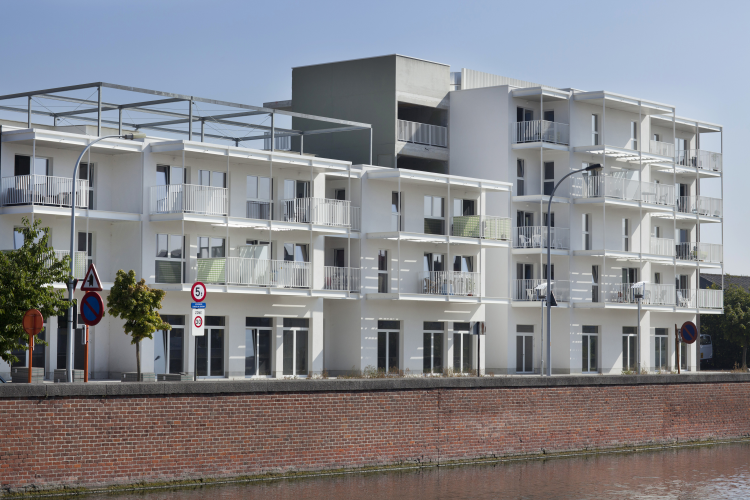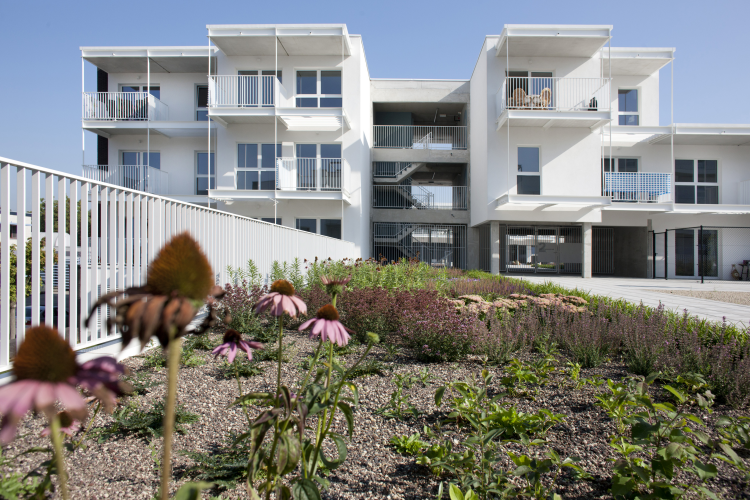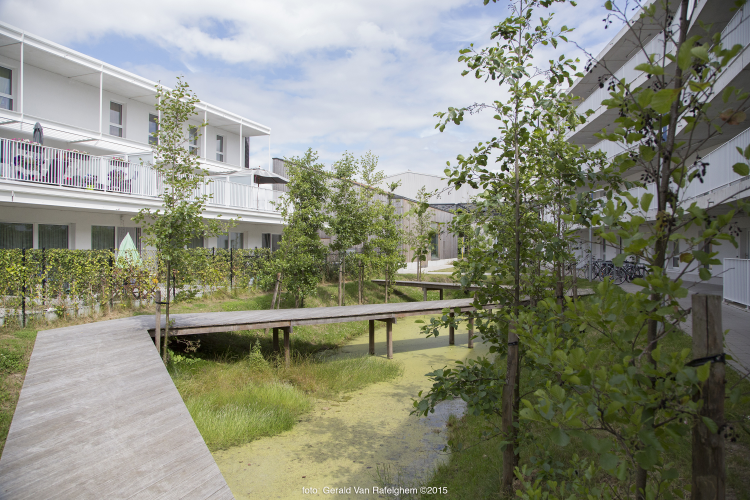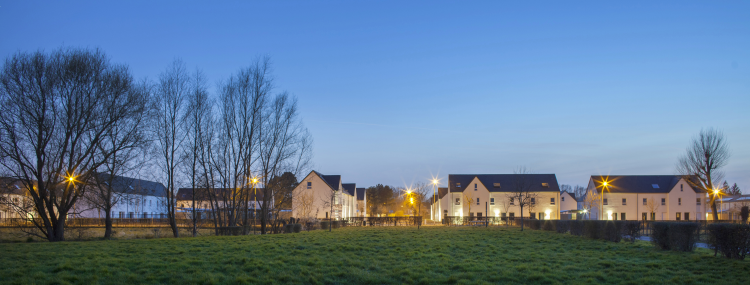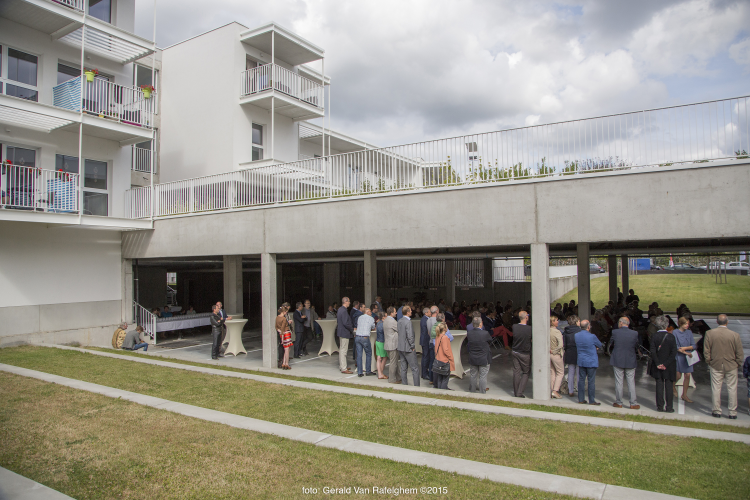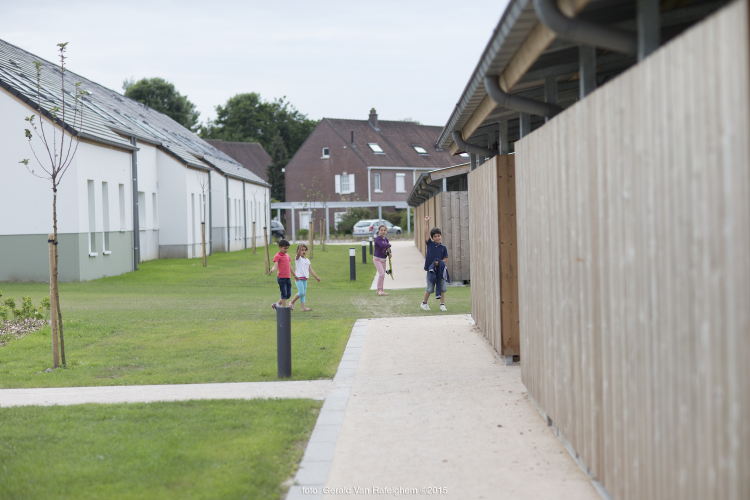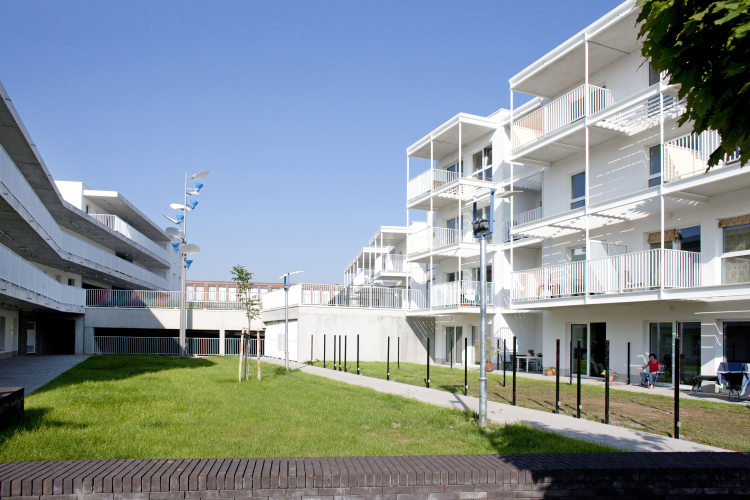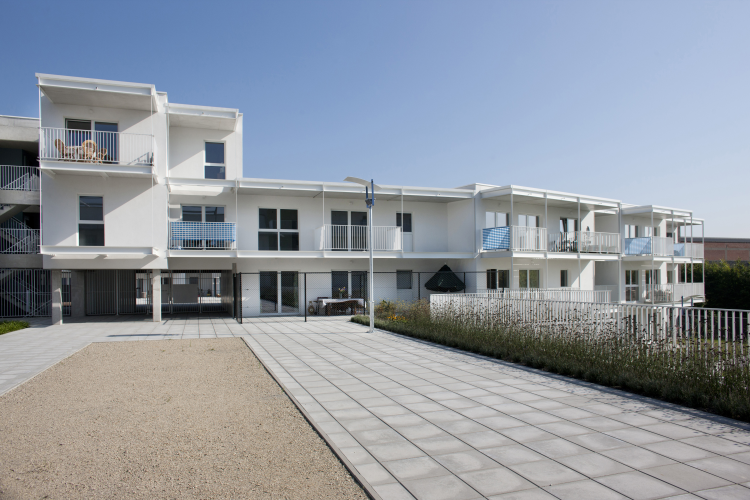Venning ECO-Life
1 The neighbourhood
Contrary to the initial request from the city to reduce the social housing district (and thereby the ‘issues’) by a half, the project was based on a certain level of compacting. It was also decided to create specific living typologies for every stage of life. This way, the number of homes was expanded from 163 to 196, including 72 apartments and 21 homes adapted for wheelchair-bound tenants. This will ensure that the neighbourhood is a suitable place to live for all generations, an entire life long. By opting for open, wrap-around walkways that give access to each resident’s front door, it was possible to make people who were neighbours in the old street, neighbours in the building as well.
2 The residences
The neighbourhood’s sustainability monitor score was particularly negative where it came to living comfort: energy consumption, healthy indoor climate, sustainably application of materials. The ECO-Life objectives directed the project’s attention to insulation, ventilation, energy conservation, and on-site energy generation. Almost every house and apartment now passes the Belgium “passive norm” for new buildings. Terraces and gardens are large enough to allow families to eat outside. Ground-floor apartments have a garden to accommodate residents with pets.
3 The neighbourhood
Private outside spaces (home terrace or garden) and the public domain (streets, bicycle lanes, central square) were supplemented with a collective garden, an orchard with fruit trees (old species of fruit that one can no longer buy in the supermarket) and shrubs (with nuts or berries). The garden will remain the property of Goedkope Woning and all residents will contribute to the maintenance and lighting costs. Since the neighbourhood is home to residents from different cultures and different age groups, the collective garden is the perfect place for all neighbours to meet and to sometimes work together. Today, many people over 75 are still able to live independently in Venning. There are other collective facilities as well: the heating system and day-care centre, the half-underground open parking garage (which can be used for parties), the pétanque court, a fish pond that doubles as a rainwater overflow reservoir, and the sunken basketball court that can also be used to temporarily drain rainwater... All these facilities are opportunities for the residents to take responsibility themselves, thereby actively contributing to the neighbourhood’s proper functioning.
4 The residents
To remove the stigma of social ghetto from the neighbourhood and replace it with a new, positive image, we opted for white buildings (against all recommendations). In the meantime, the new neighbourhood has been recognised and praised as an ecological district, which the residents are very proud of. The architecture intentionally invokes a Mediterranean holiday resort more than a typical social tenant neighbourhood.
Modalidad Local social sustainability
Dirección
Spinnerijkaai 61
8500 - Kortrijk
(Bélgica)


